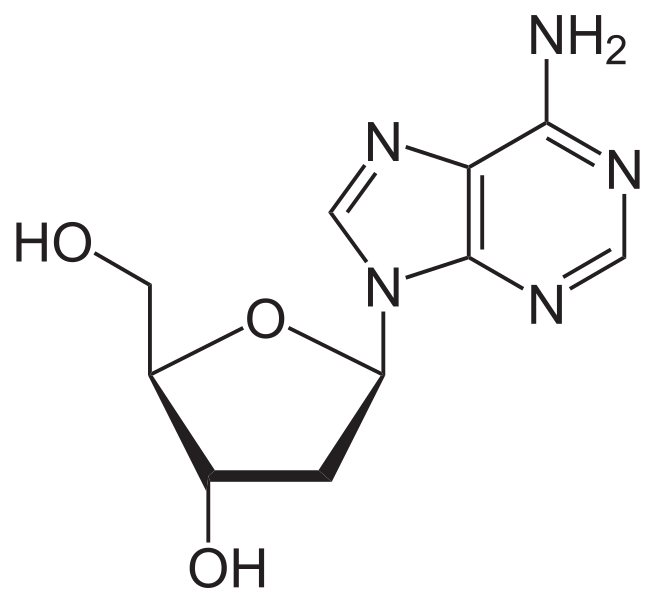
Main Difference
The main difference between Nucleoside and Nucleotide is that the Nucleoside is a glycosylamine that can be thought of as nucleotide without a phosphate group and Nucleotide is a biological molecules that form the building blocks of nucleic acids
-
Nucleoside
Nucleosides are glycosylamines that can be thought of as nucleotides without a phosphate group. A nucleoside consists simply of a nucleobase (also termed a nitrogenous base) and a five-carbon sugar (ribose or 2′-deoxyribose) whereas a nucleotide is composed of a nucleobase, a five-carbon sugar, and one or more phosphate groups. In a nucleoside, the anomeric carbon is linked through a glycosidic bond to the N9 of a purine or the N1 of a pyrimidine. Examples of nucleosides include cytidine, uridine, adenosine, guanosine, thymidine and inosine.While a nucleoside is a nucleobase linked to a sugar, a nucleotide is composed of a nucleoside and one or more phosphate groups. Thus, nucleosides can be phosphorylated by specific kinases in the cell on the sugar’s primary alcohol group (-CH2-OH) to produce nucleotides. Nucleotides are the molecular building-blocks of DNA and RNA.
-
Nucleotide
Nucleotides are organic molecules that serve as the monomer units for forming the nucleic acid polymers deoxyribonucleic acid (DNA) and ribonucleic acid (RNA), both of which are essential biomolecules within all life-forms on Earth. Nucleotides are the building blocks of nucleic acids; they are composed of three subunit molecules: a nitrogenous base (also known as nucleobase), a five-carbon sugar (ribose or deoxyribose), and at least one phosphate group.
A nucleoside is a nitrogenous base and a 5-carbon sugar. Thus a nucleoside plus a phosphate group yields a nucleotide.
Nucleotides also play a central role in metabolism at a fundamental, cellular level. They carry packets of chemical energy—in the form of the nucleoside triphosphates Adenosine triphosphate (ATP), Guanosine triphosphate (GTP), Cytidine triphosphate (CTP) and Uridine triphosphate (UTP)—throughout the cell to the many cellular functions that demand energy, which include: synthesizing amino acids, proteins and cell membranes and parts, moving the cell and moving cell parts (both internally and intercellularly), dividing the cell, etc. In addition, nucleotides participate in cell signaling (cyclic guanosine monophosphate or cGMP and cyclic adenosine monophosphate or cAMP), and are incorporated into important cofactors of enzymatic reactions (e.g. coenzyme A, FAD, FMN, NAD, and NADP+).
In experimental biochemistry, nucleotides can be radiolabeled with radionuclides to yield radionucleotides.
-
Nucleoside (noun)
an organic molecule in which a nitrogenous heterocyclic base (or nucleobase), which can be either a double-ringed purine or a single-ringed pyrimidine, is covalently attached to a five-carbon pentose sugar (deoxyribose in DNA or ribose in RNA). When the phosphate group is covalently attached to the pentose sugar, it forms a nucleotide.
-
Nucleotide (noun)
The monomer constituting DNA or RNA biopolymer molecules. Each nucleotide consists of a nitrogenous heterocyclic base (or nucleobase), which can be either a double-ringed purine or a single-ringed pyrimidine; a five-carbon pentose sugar (deoxyribose in DNA or ribose in RNA); and a phosphate group.
-
Nucleotide (noun)
a compound consisting of a nucleoside linked to a phosphate group. Nucleotides form the basic structural unit of nucleic acids such as DNA.
